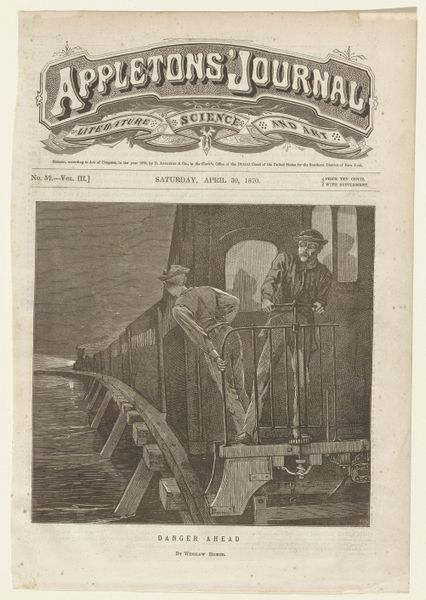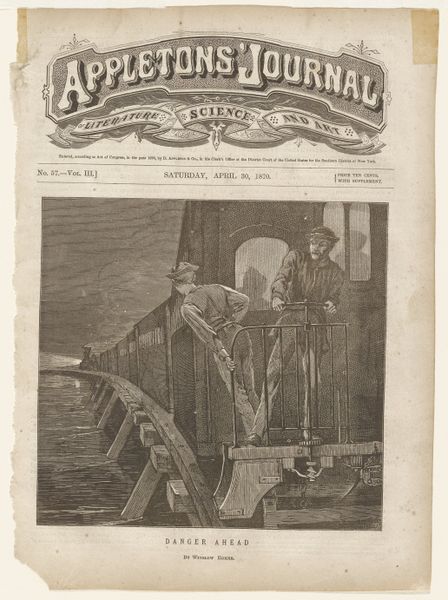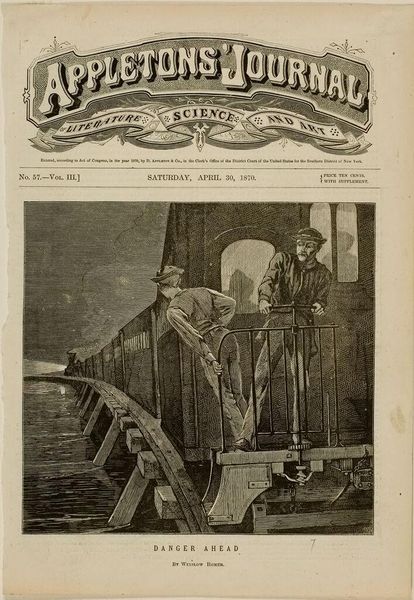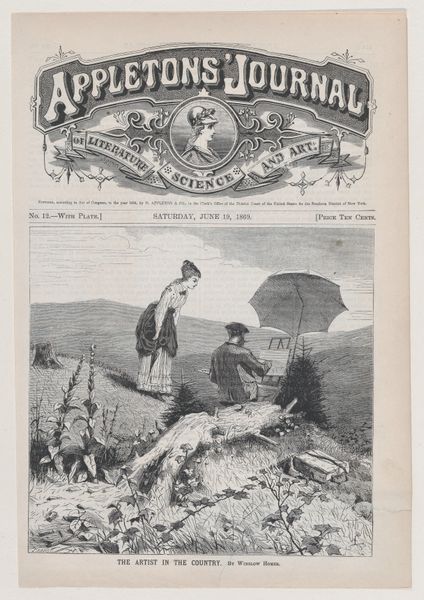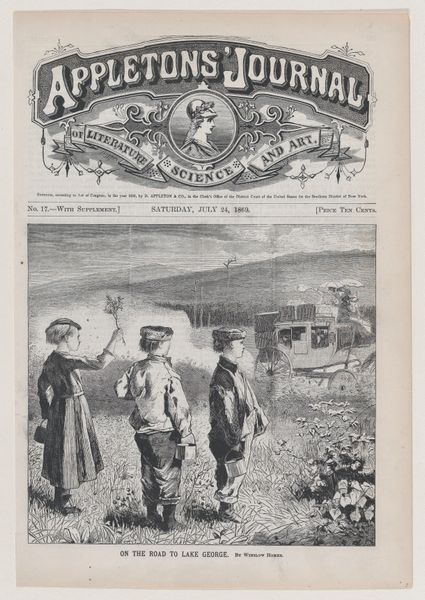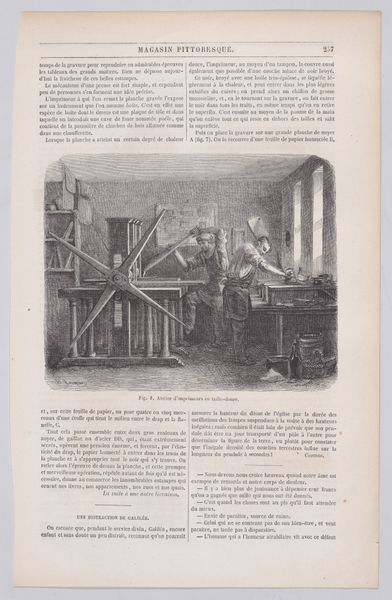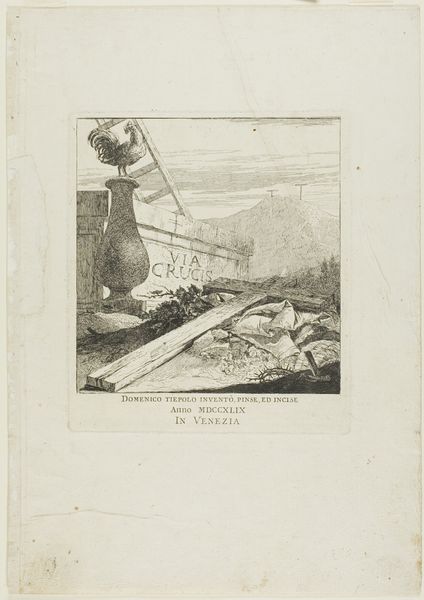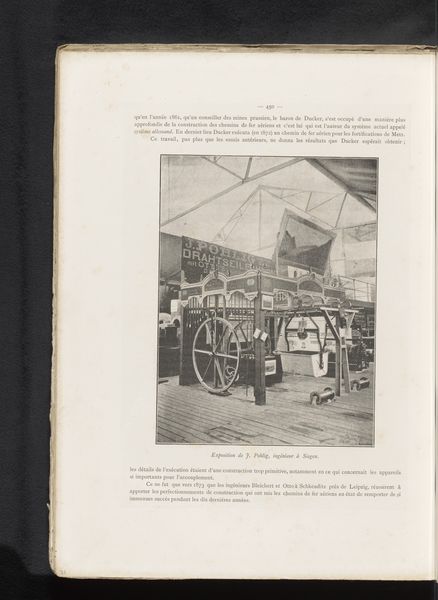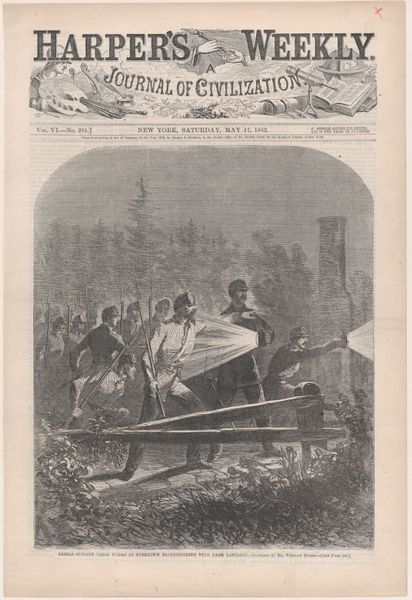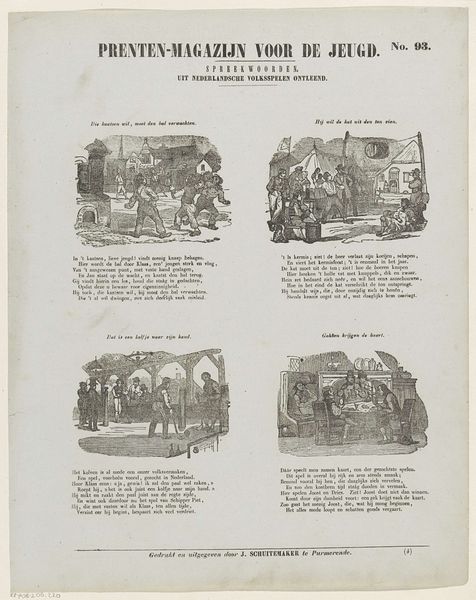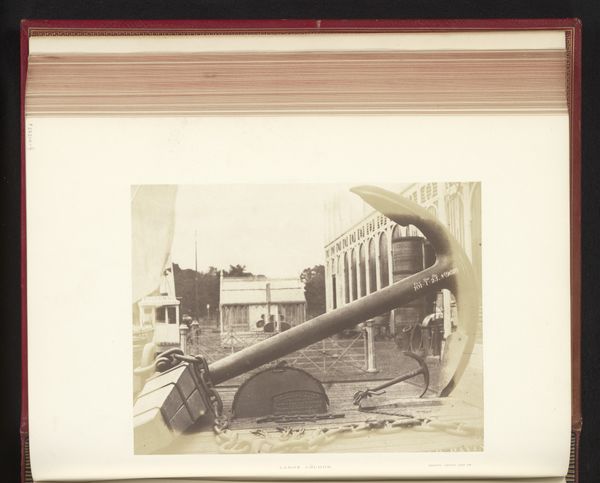
Danger Ahead (from "Appleton's Journal," Vol. III) 1870
0:00
0:00
drawing, print, etching, paper
#
drawing
#
narrative-art
# print
#
etching
#
paper
#
men
#
genre-painting
#
history-painting
Dimensions: image: 6 1/8 x 6 1/2 in. (15.6 x 16.5 cm) sheet: 10 7/8 x 7 3/8 in. (27.7 x 18.8 cm)
Copyright: Public Domain
Editor: Here we have Winslow Homer’s "Danger Ahead," a print from Appleton's Journal in 1870. The stark blacks and whites really emphasize the drama of the scene—it feels almost theatrical. What do you see in this piece? Curator: I see a powerful commentary on the often-overlooked labor and risks that fueled American industrialization. Note the figures; they're silhouetted against the unknown, their bodies tense. Homer, through his focus on working-class subjects, invites us to consider whose bodies bore the brunt of progress, and at what cost. Does this image suggest any historical context to you? Editor: I suppose it evokes the rapid expansion of railroads at the time and the inherent dangers of that work? The title really drives that home. Curator: Exactly. This piece appeared shortly after the Civil War. Think about the demographics of railroad laborers then: Often marginalized communities – immigrants, formerly enslaved people – facing dangerous conditions for meager wages. Homer subtly nods to these power dynamics, presenting them as both essential and vulnerable. How does the visual language contribute to this interpretation? Editor: The darkness does make them anonymous somehow, almost like symbols rather than individuals, which highlights the systemic nature of their exploitation. I had just considered it a snapshot. Curator: Precisely. It’s not just about individual risk; it’s about the systematic precarity inherent in the pursuit of progress. Homer uses a popular medium like a journal to make a pointed statement. Considering the artwork, it compels us to confront the ethical complexities embedded within our own historical narratives. Editor: I had not thought about the men as stand-ins, I was looking at them in a much more literal way, not through that lens of race and class. Curator: These historical and cultural layers aren’t always immediately apparent. Thinking intersectionally about artworks can transform the narrative, enabling new conversations.
Comments
No comments
Be the first to comment and join the conversation on the ultimate creative platform.
